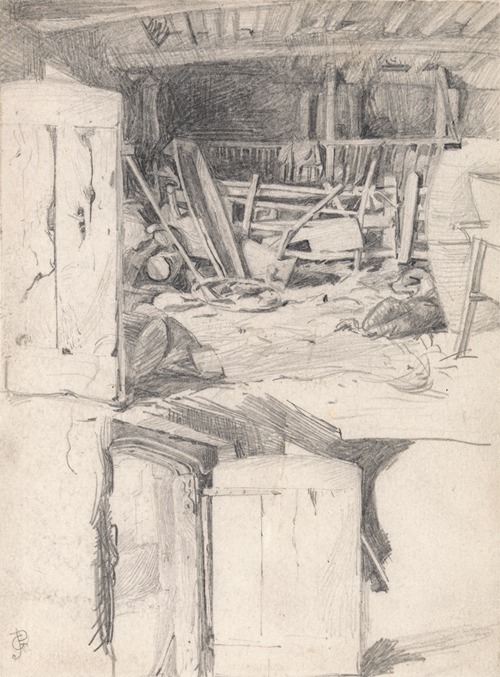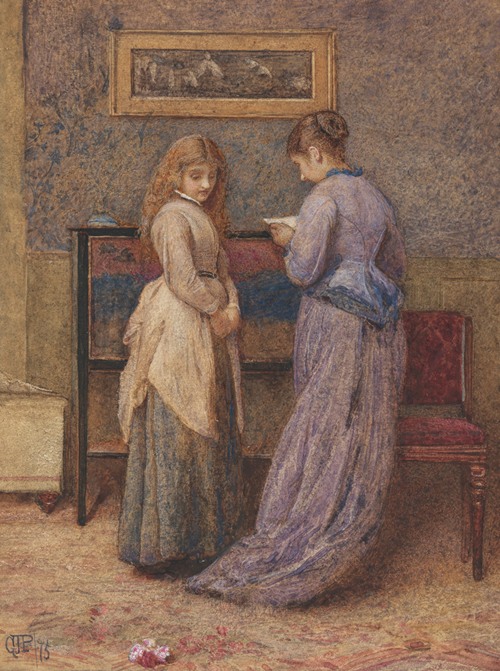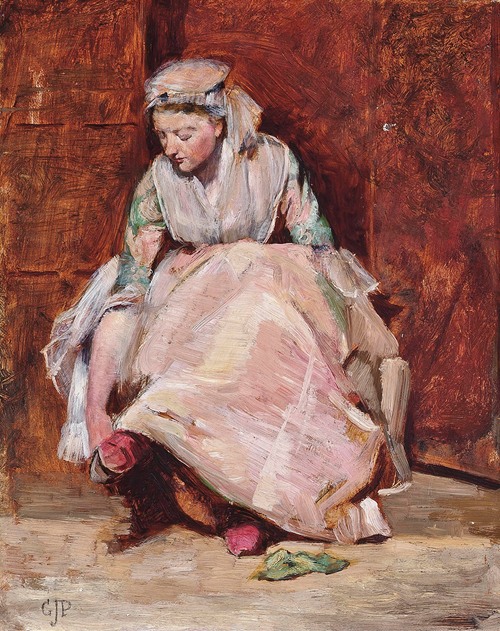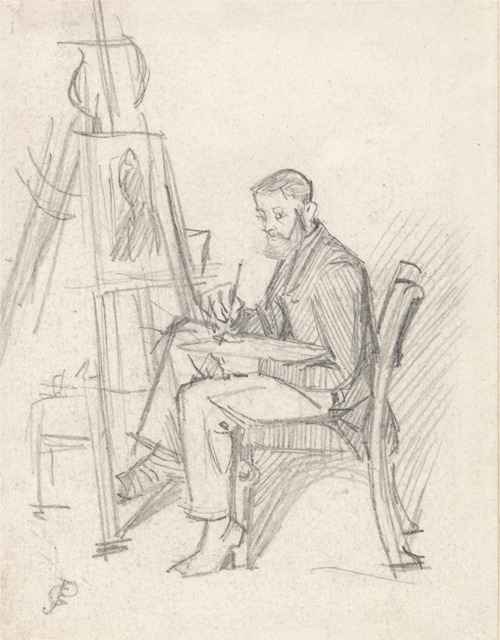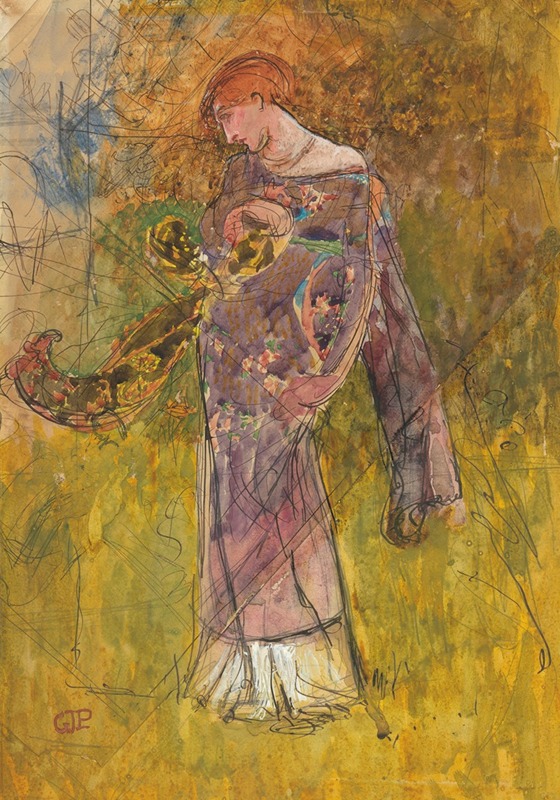

George John Pinwell RWS, was a British illustrator and watercolourist.
Pinwell was born on 26 December 1842 at 12 Great Mays Buildings, London. He was baptised on 27 July 1845, at St. Mark's, Surbiton, south-west London, along with his younger brother Henry (born c. 1845). His parents were John Pinwell, a carpenter or builder, and his wife, Mary Ann Baker. Pinwell's father was thought to have been involved in building the original Surbiton railway station in south-west London. His mother was "a rough, illiterate woman", and "a rough and determined person."
Pinwell's father dies in 1854, leaving the family in very straightened circumstances. He apparently worked as a butterman's boy in the City Road, London whose work, among other things was to stand outside the shop on Saturday nights shouting "Buy| Buy| Buy!"
He then worked making designs for a firm of embroiderers. In the 1861 census he recorded his occupation as "designer of Embroidery". His two younger brothers Henry (born c. 1845) and Alfred (born c. 1847), both had their occupation listed as house carpenter.
His work on embroidery design led to him meeting his future wife Isabella Marcy Stevens (c. 1843 – first quarter of 1923) who needed a design for a difficult piece of work. The acquaintanceship grew into affection, and eventually to marriage. The couple were married at St. Marylebone in London on 24 April 1865. The 1911 census shows that the marriage was without issue.
While working at the embroiderers Pinwell attended night school at St. Martin's Lane Academy. After his mother's remarriage in 1861 removed the need for him to work, he became a full time pupil at the Academy, and in 1862 he moved on to Heatherley's Academy. In the following year he was drawing on wood blocks for the Dalziel Brothers.
The 1871 census shows his profession as an artist in watercolours, residing at 52 Adeliaid Road in Hampstead. In 1874 Pinwell fell seriously ill and went to North Africa for the winter and spent eight months there. He returned to London in the spring of 1875. He died of consumption on 8 September 1975 at 86 Adelaide Road, Haverstock, South Hampstead, London. His estate was valued at less than £800 and his wife was the executrix.
He was buried on 11 September 1875 on the western side of Highgate Cemetery. His two brothers, and two brothers-in-law, Alfred and Thomas Stevens, attended the funeral. His grave (plot no.20882) has no headstone or visible memorial.
His professional friends came together after his death to raise a fund for the benefit of the widow. Many of his studies and sketches were made public after his death. A posthumous exhibition of his works was held in February to March at M. Deschamp's Gallery at 168 New Bond Street. After the exhibition, any works that were not private property were to be sold at Christie's for the benefit of the widow.
George C. Williamson wrote a biography of Pinwell in 1900. However, Reid states that this was undertaken largely for the satisfaction of Pinwell's widow, and that "its main purpose seems to be to persuade us that Pinwell could hold his own in the most refined society" and to counter "contemporary allegations concerning his sobriety and his grammar."
